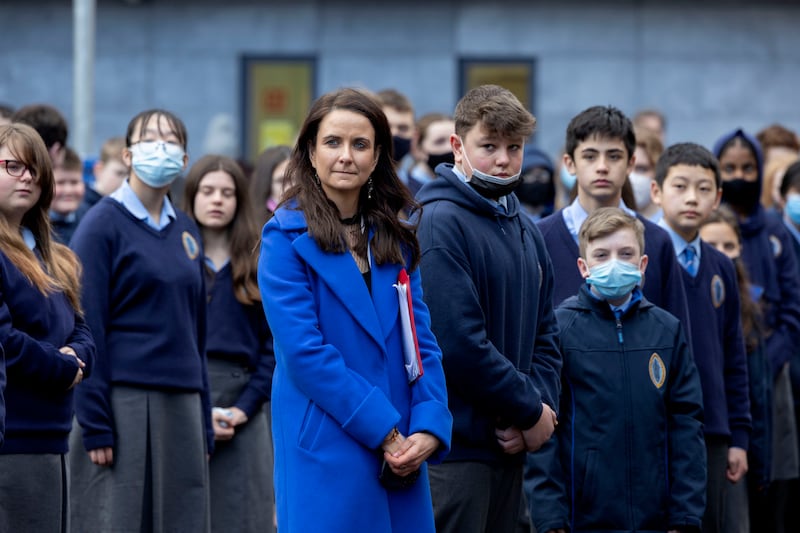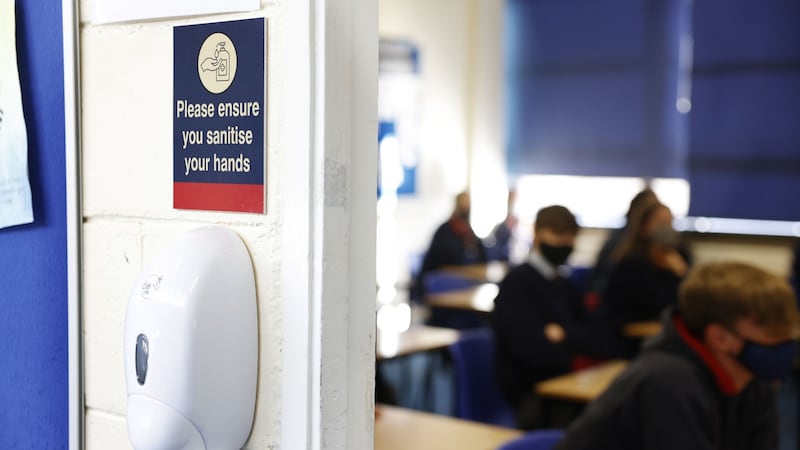Students are back to school, the facemasks are off – but the fallout from disruption remains.
Many teachers have noticed that their students are more withdrawn than previous years, with young people – particularly those in second-level – having missed out on the normal rites of passage and transitions that previous generations have taken for granted. Many lost family members to the virus.
During and post-Covid teachers and student leaders have reported a further spike in mental health difficulties among young people, while a survey for Healthy Ireland of 7,454, interviewed between October 2020 and March 2021, found that 60 per cent of under-25s experienced at least one negative change to their mental health as a result of the pandemic.
Hospital Report
In January 2022 the Government’s special rapporteur on children, Professor Conor O’Mahony, documented the harmful impact of school closures on young people and, in the context of this or future pandemics, called for every other possibility to be exhausted before schools were ever closed again.
Schools across the country are now dealing with this fallout, with some young people struggling to access the appropriate mental health supports.
Conor Casby is coordinator of a school completion programme in Dublin which is supported by the Government and assisted by the Irish Youth Foundation.
He has seen first-hand the impact that school closures had on young people, particularly those in disadvantaged areas.
“The whole of society was affected by the pandemic, of course, but it was particularly hard on students who had smaller living spaces, who may not have had their own room or much privacy, who may not have had laptops or iPads and were trying to do their school work through their phones,” he says.
Students and families who rely on youth services, child and family projects or afterschool services were impacted by their closure
“These are services that direct the energy of young people into positive pro-social activities, and their closure was really felt by the young people and communities who need them most,” says Casby. “There was a big impact on how they perform in school.”
Patricia Harrington is guidance counsellor at St Patrick's Cathedral Grammar School in Dublin 8, a formerly fee-paying school which takes in a broad cohort of students from both middle class and disadvantaged areas across the city.
I felt like I wasn't able to disconnect from school and home because everything was being done in one room, which drove me a little mad
Some are drawn from as far away as Wicklow because of the school's strong music programmes. Like most schools and youth services across the country, they did their best to mitigate the worst effects of closures.
“When we went into our first lockdown, we worked with parents, the board and, crucially, the students, to reduce the timetable and ease pressure and anxiety for the students who were now working from home,” she says.
“Then, when we were back in school, the student voice remained central, so we asked them what they wanted. We’d move to one hour classes but the students advised us they’d like 15 minute breaks between them, and we’d use that time to go to local park and walk and talk: this was about building back up their social skills which had been impacted by online learning.”

Earlier this year the school held a “health and happiness week” which included a range of activities for students to take part in, including dancing, ping-pong challenges, careers talks, support from past pupils, and the launch of a college scholarship funded by local businesses in the area.
“It was really important to keep students motivated during lockdowns,” says Harrington.
“We were aware that the students who came into first year in 2020 had missed out on the usual transition supports, so we set up mentor groups to help support them. The transition year who missed out on work experience were supported in developing career profiles and by putting them in touch with people in different professions.
“It all came back to ensuring the students felt motivated – and the student voice was central here. Schools are more positive environments when you listen to what motivates young people and act on it.”
Casby says that many initiatives kicked into gear during the pandemic, including providing food drops and laptops for families in need, but work is ongoing to help build up the resilience of young people and reduce anxiety.

“There’s been a big shift in focus to wellbeing, because children have to feel safe and comfortable and have their basic needs met before they can learn. This is why there’s been such a focus on wellbeing in schools.
“There’s a move from punishment towards restorative practices, which involves dialogue, mutual understanding and listening, and we’re seeing more teachers and schools trained in it.”
I live in the countryside with very poor internet access. There was a time where we would go hours or even days without the internet
Emer Neville, president of the Irish Second Level Students Union, agrees that students do better when they feel listened to.
"Lockdown affected our social development: this year's Junior Cert class has never had a normal secondary school experience," she says.
“This means better mental health supports including more guidance counselling hours, tackling equality issues – such as girls having to wear skirts – and listening to us on Leaving Cert reform: the extra choice this year should stay beyond 2022.
“Ultimately to help students settle back in, they need to work on schools being a place where students want to be.”
‘It’s been seriously hard on my mental health’: How Covid has shaped students
We asked member of the Irish Second Level Students Union about the return to school, how the pandemic impacted them and what they think needs to happen next. This is a selection of their replies:
Impact of school closures:
-“I had just transferred into my school when the lockdown began so it impacted on my ability to get to know the students and teachers.”
-“The pandemic was seriously hard on my mental health: being away from school and not being able to see my friends was difficult. I felt like I wasn’t able to disconnect from school and home because everything was being done in one room, which drove me a little mad.”
-“School isn’t necessarily my favourite place so I welcomed the lockdown initially… I definitely have mixed feelings but [now] I am much happier to be in school during this exam year.”
Disadvantages of remote learning:
-“My twin brother and I were both doing the Leaving Cert and my sister was in her first year of college so we all needed to be online which affected the strength of the wifi connection. My brother didn’t have a laptop for the first part of online learning and I didn’t have a desk so we had to go out and get those things which was an additional cost on our family.”
-“I live in the countryside with very poor internet access. There was a time where we would go hours or even days without the internet. Over time it was improved but never to the level it needed to be. I was kicked out of endless video calls and it made learning that bit more frustrating.”
Advantages of remote learning:
-“Teachers uploading notes and work online helped me.”
-“Recorded classes made catching up so much easier.”
- "Classes being uploaded to Google Classroom allows us to go back over it for study purposes."
- “None: learning is done best and is most beneficial in person.”
What can schools do to make things better for students?
-“Ensure they have engaged student councils that can make a difference.”
- “Listen to students.”
- “Provide extra mental health supports.”
- “I think my school is being as supportive as they can.”
- “Reform the relationships and sexuality education programme.”










